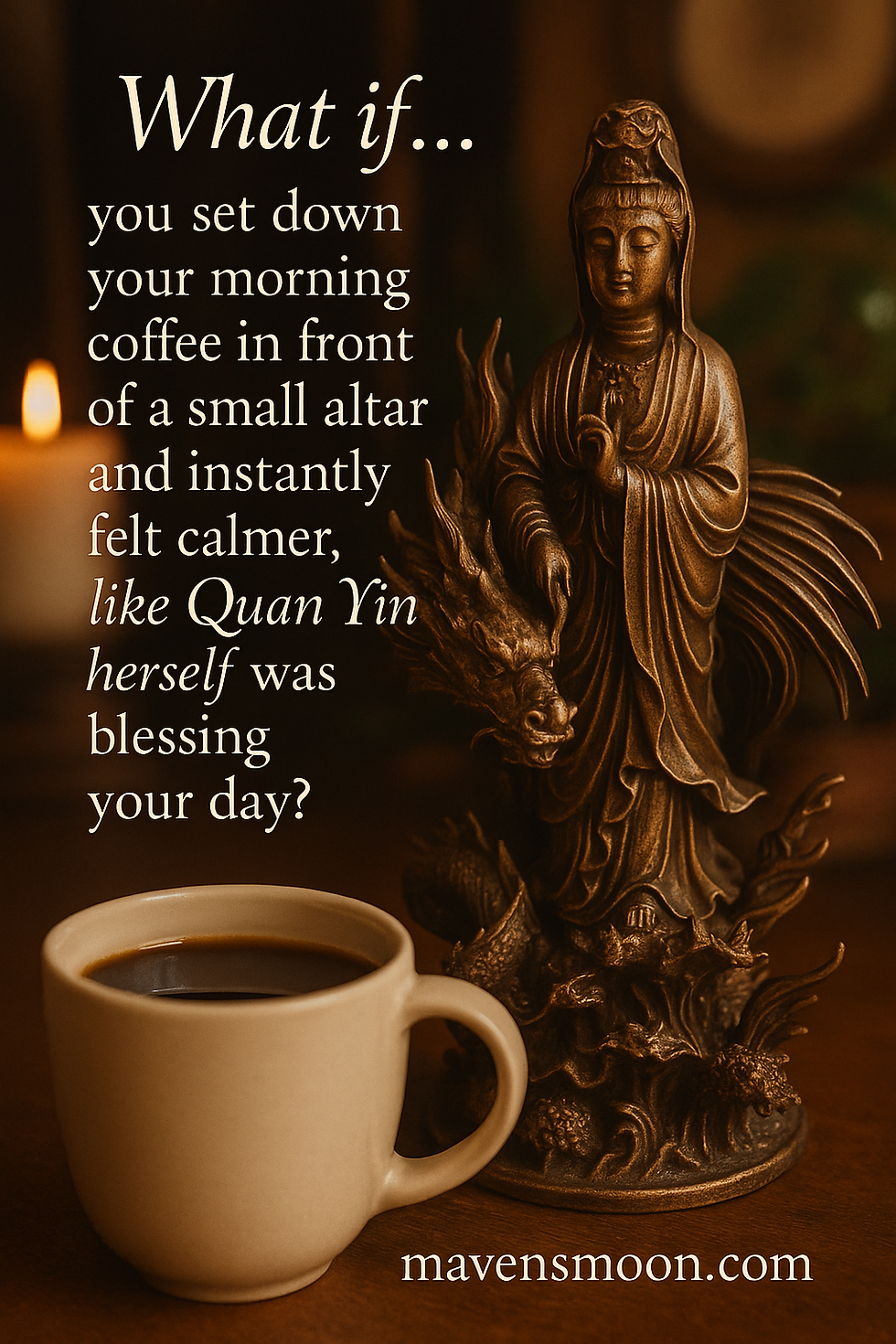From Thor to Quan Yin: Why the Old Gods Are Back on Our Mantels
- Fae

- Aug 25
- 3 min read
Step inside a dinner party in Austin, a bohemian loft in Brooklyn, or a restored Victorian in Fort Worth, and you’ll notice something unexpected among the designer glassware and curated book stacks: a quiet pantheon. Athena with her owl, Quan Yin radiating calm in pale resin, Zeus mid-thunderbolt. The gods have returned—not in temples of stone, but on mantels and coffee tables, as if watching over Wi-Fi routers and oat milk lattes.
Aesthetic Altar Culture
On Instagram, altars have gone viral. No longer private shrines, they’ve become mood boards: velvet cloths, shimmering crystals, sculpted figurines, candles burning low. To place a goddess on your bookshelf is to signal both intention and taste. Figurines are no longer just devotional—they’re design objects. At Maven’s Moon in White Settlement, shelves of hand-sculpted deities gleam under fairy lights: Aphrodite in soft rose tones, Odin stern in gray, Quan Yin in serene majesty. They’re collected not just by witches, but by interior stylists, yoga teachers, and even corporate creatives chasing a touch of timelessness.
Archetypes in an Anxious Age
It isn’t only about aesthetics. In a world that scrolls endlessly, people crave archetypes—anchoring symbols that remind them who they are, or who they want to become. Zeus embodies unapologetic power, Quan Yin endless mercy, Hecate the wisdom of thresholds. To hold these figures close is to borrow strength from the mythic. “People are tired of narratives that change every hour,” says one Maven’s Moon customer. “A goddess doesn’t change with the algorithm. She endures.”

The New Spiritual Pluralism
Today’s seekers aren’t bound by tradition. TikTok witches mix pantheons the way Vogue readers mix high fashion and vintage: a Norse god beside an Egyptian goddess, a Hindu deity sharing shelf space with a Celtic faery. It’s a cosmopolitan pantheon—democratic, playful, yet deeply personal. This pluralism makes devotion approachable; it’s less about doctrine, more about resonance. At Maven’s Moon, a shopper can pick a figurine of Persephone for her descent-and-rebirth story, a dragon for protection, or Quan Yin as a daily meditation anchor.
Wellness Meets Myth
Wellness has become a lifestyle sector, and the gods slot right in. Quan Yin doubles as a visual mantra for compassion, while Thor with his hammer resonates with resilience culture. A figurine isn’t just décor—it’s a tactile mindfulness tool, a reminder of one’s chosen virtues. Maven’s Moon’s figurines are made to be held, admired, and worked with, blurring the line between talisman and art object.
From Status Symbol to Soul Symbol
Luxury today is not just about what you wear, but what you venerate. Just as handbags and sneakers signal identity, so does the altar. Figurines become status symbols that are also soul symbols. They tell visitors: I know who I am, and I’ve curated my home accordingly.
Why Now?
Because the world feels unstable, noisy, and too often unenchanted. People are pulling the old gods back into their homes as a counterspell—restoring myth to the everyday. Each figurine is both a nod to history and a claim to presence.
And for those looking to begin their own modern pantheon, Maven’s Moon is where the gods live again—hand-sculpted, 3D-printed, each piece ready to anchor a story in your space. From Zeus to Quan Yin, from Odin to Isis, these aren’t just figurines. They’re invitations to myth, beauty, and the timeless conversation between mortal and divine.




Comments